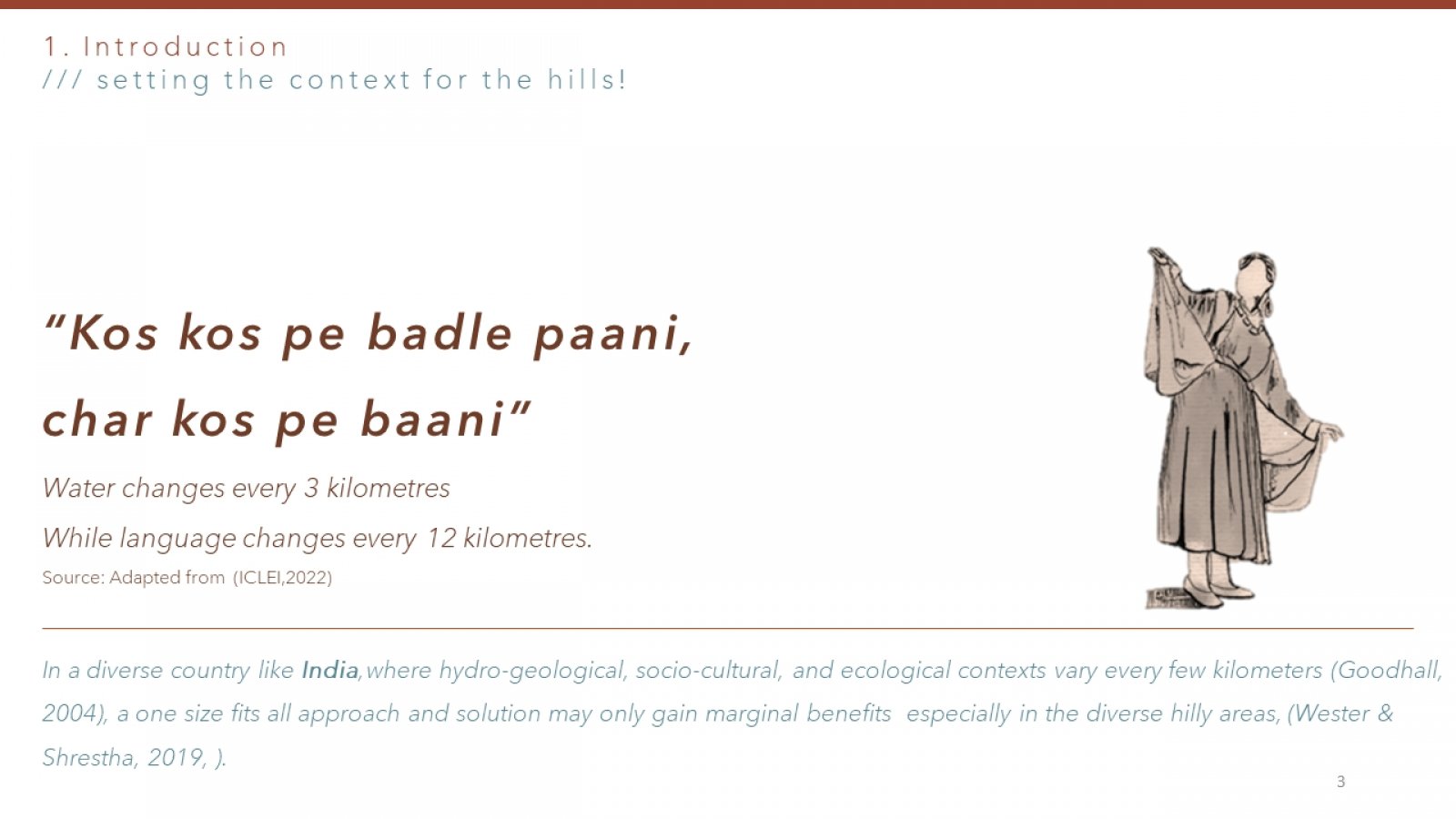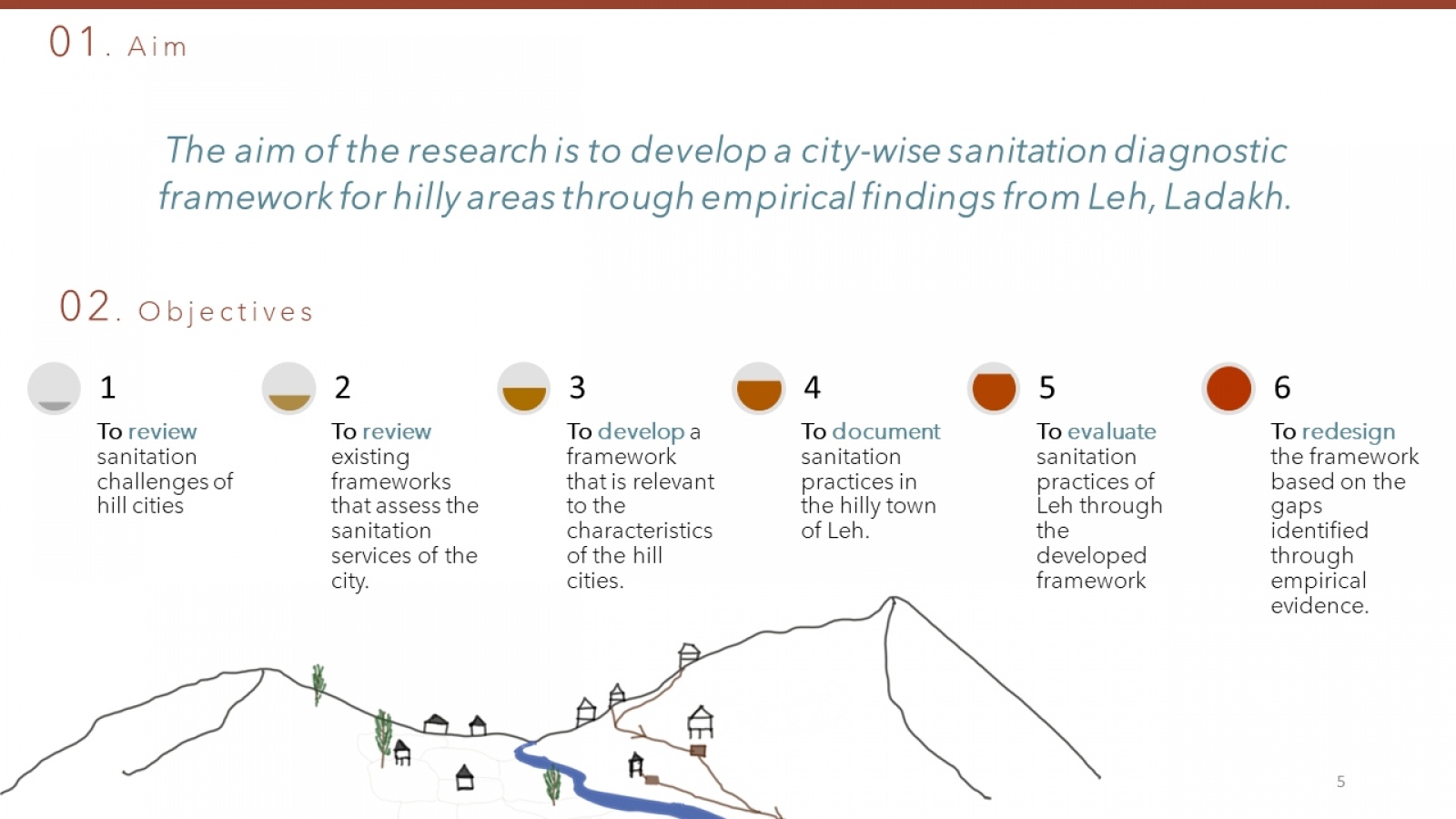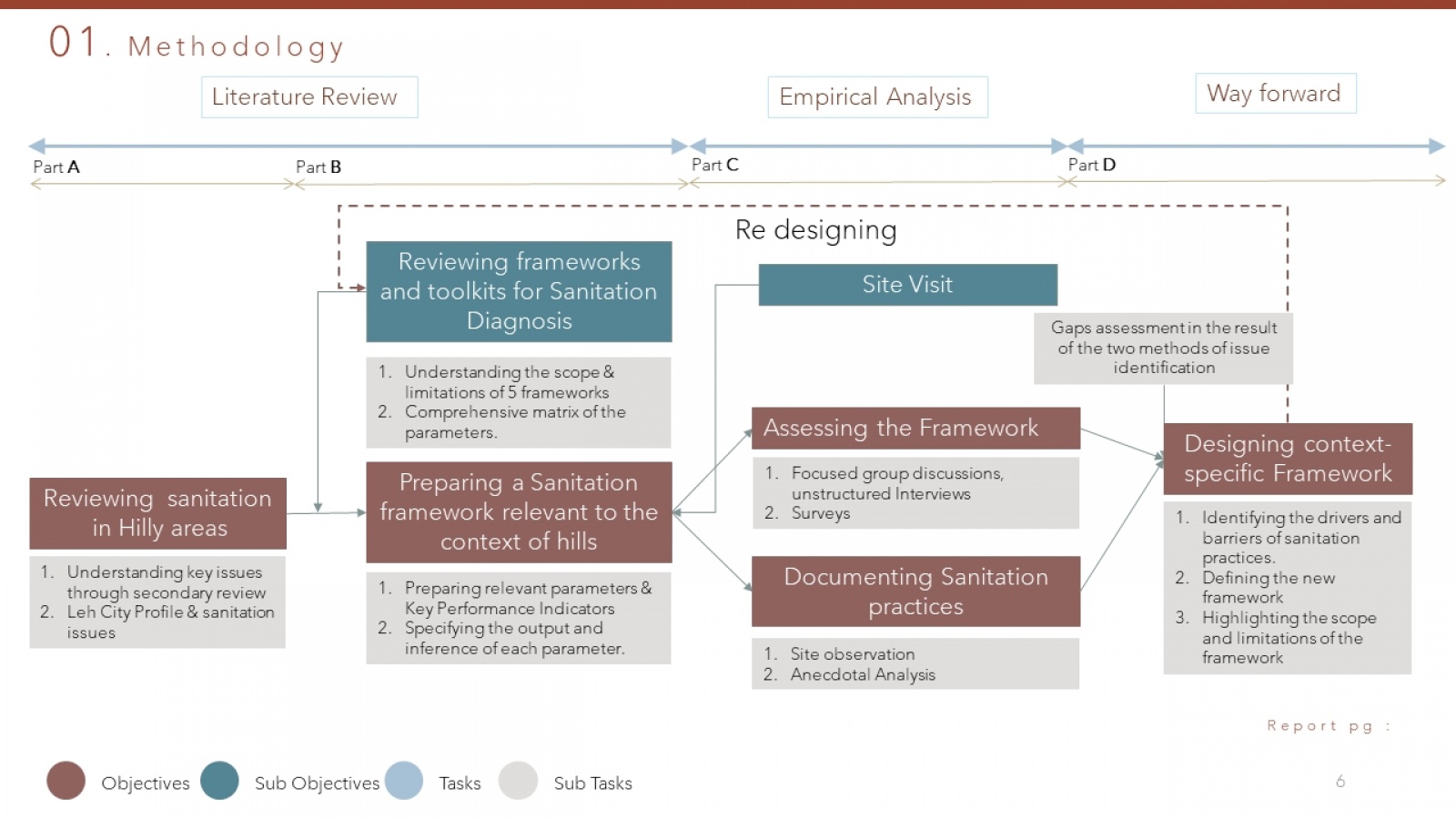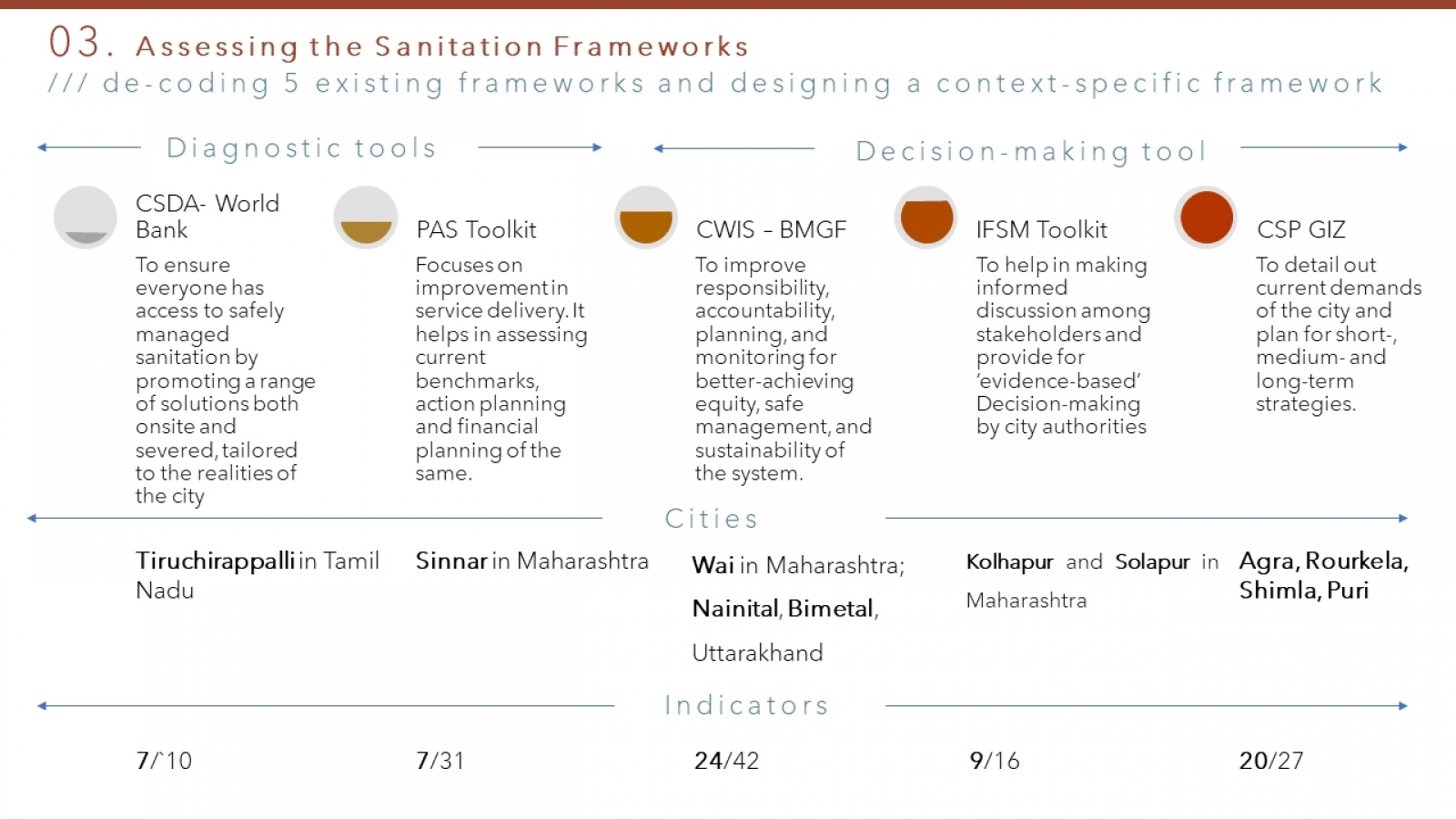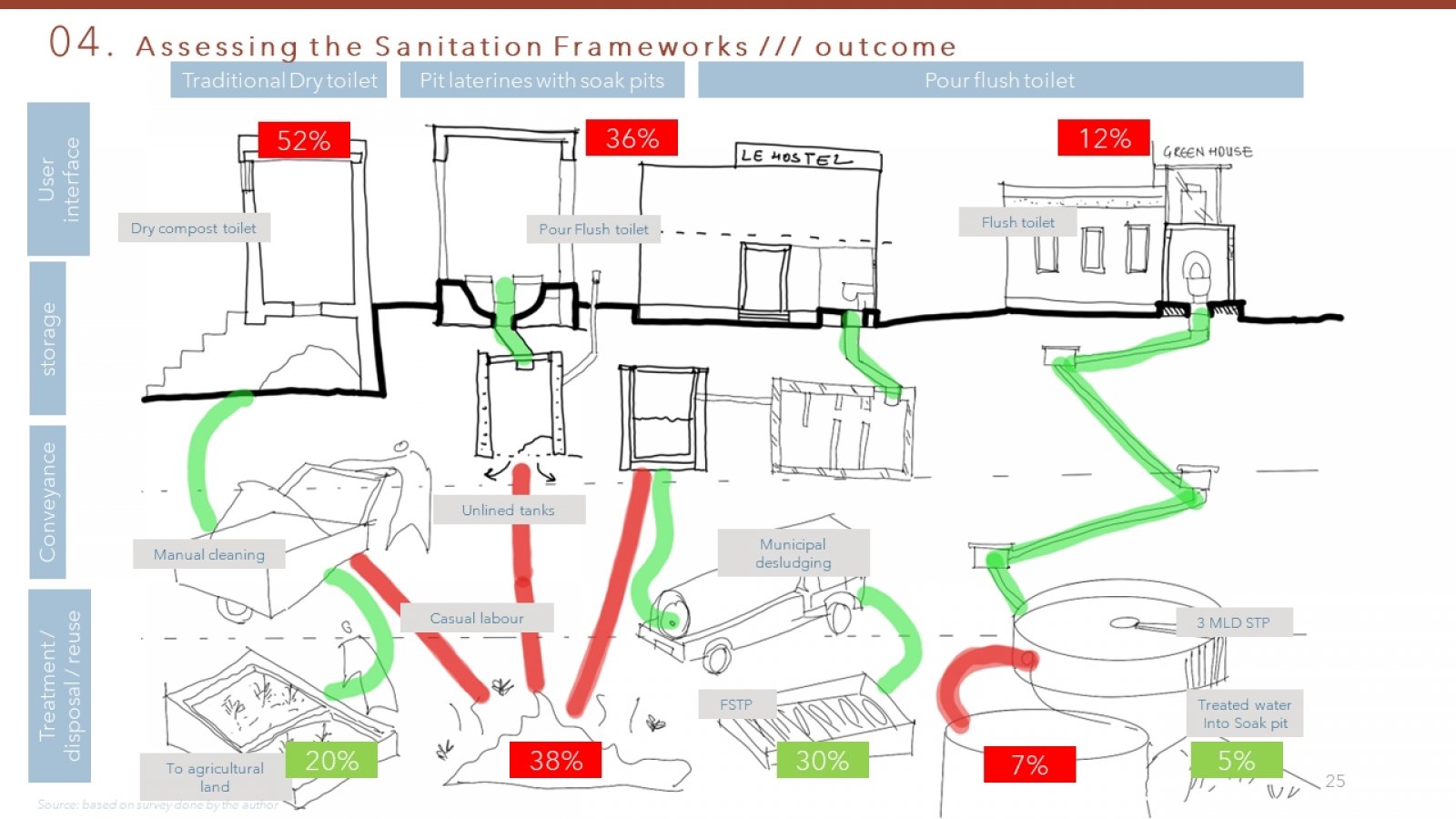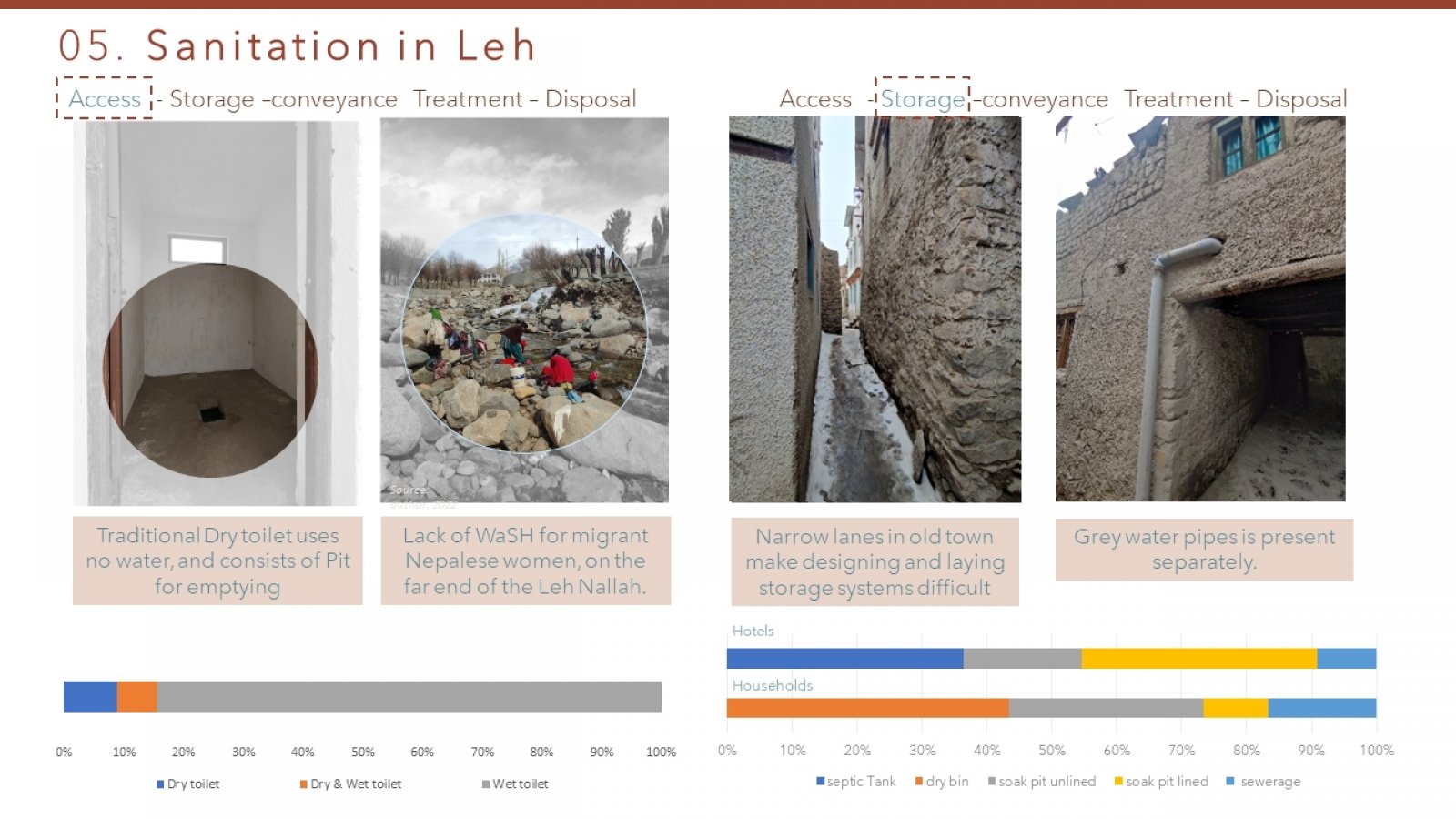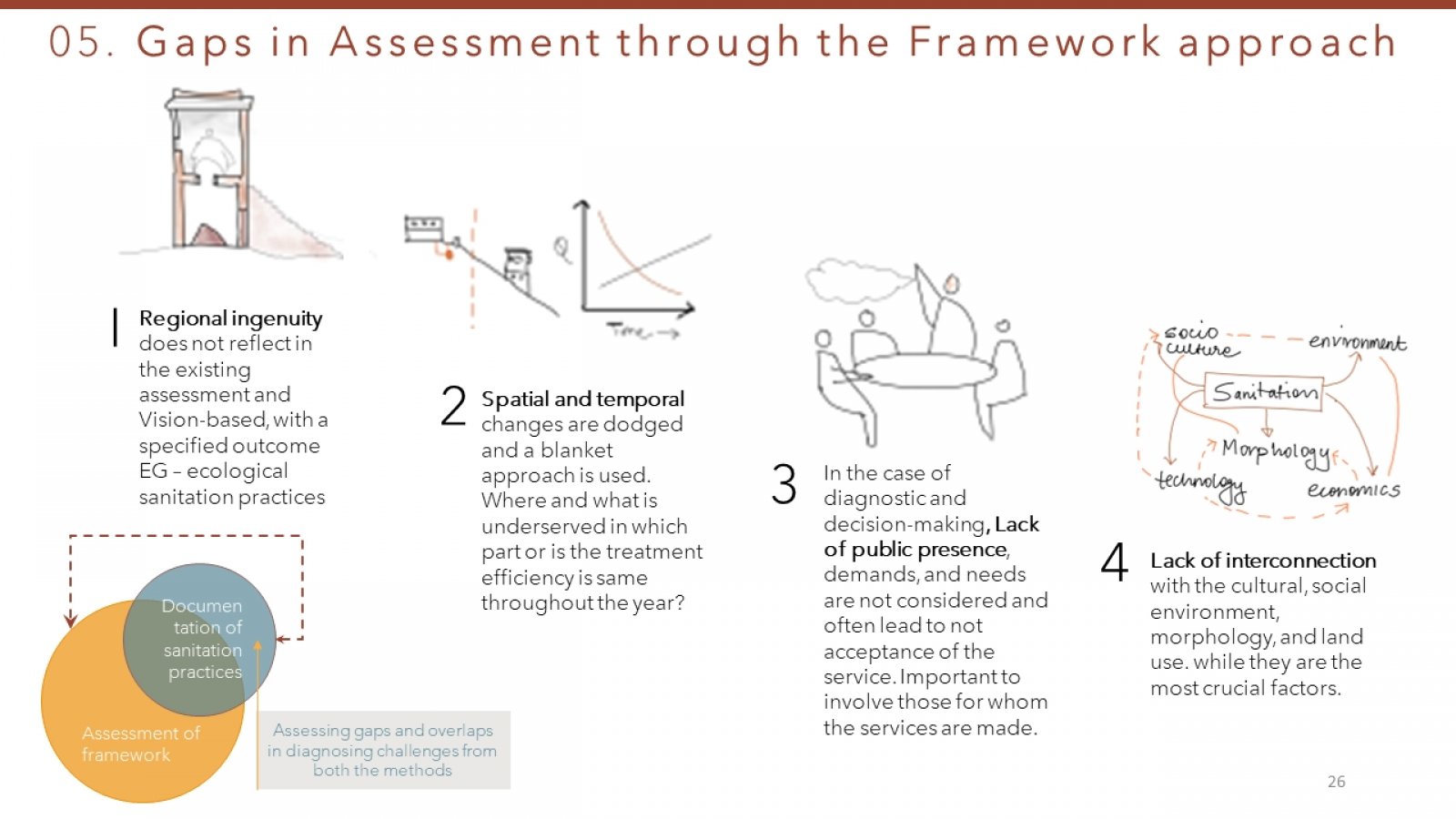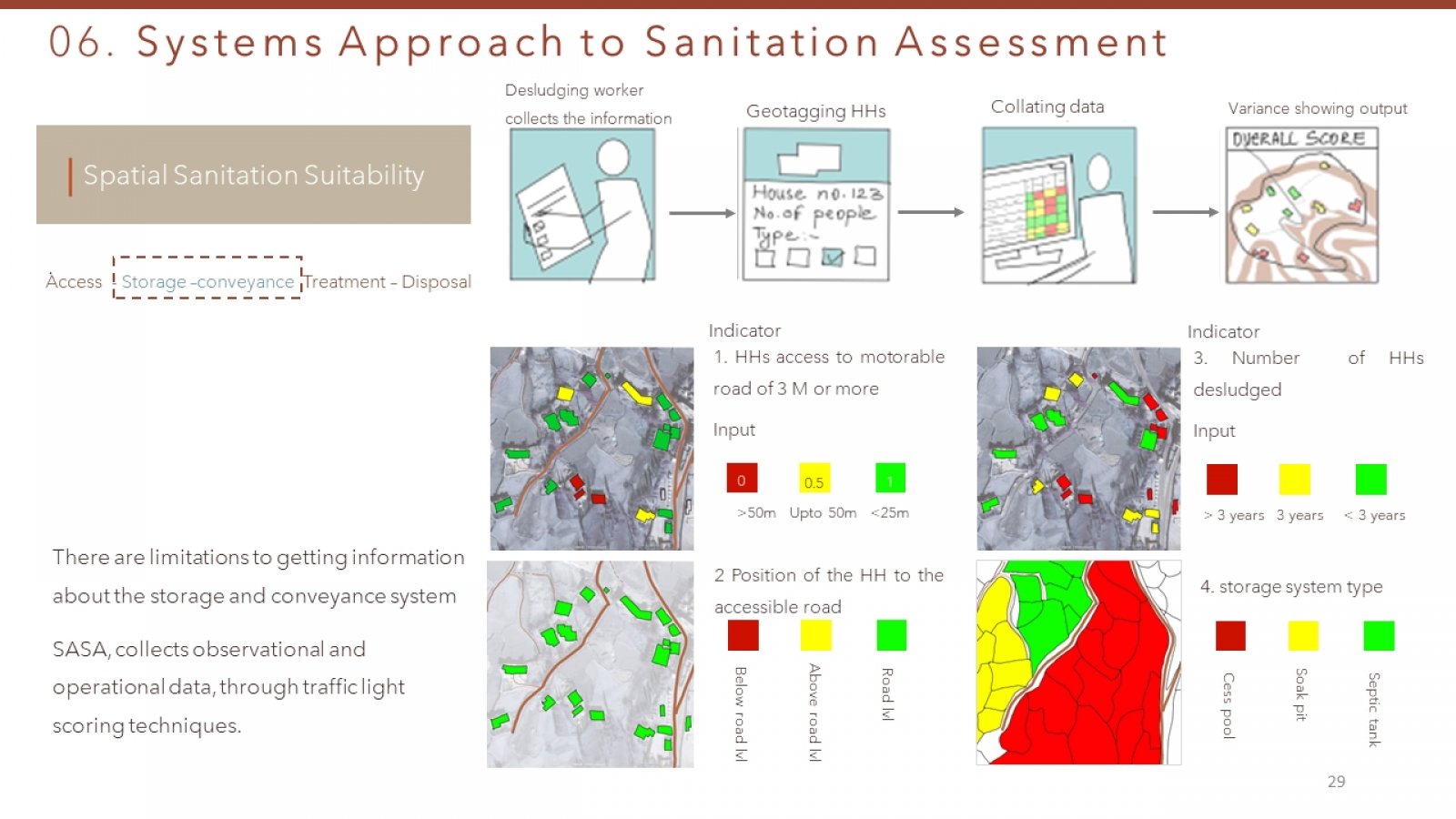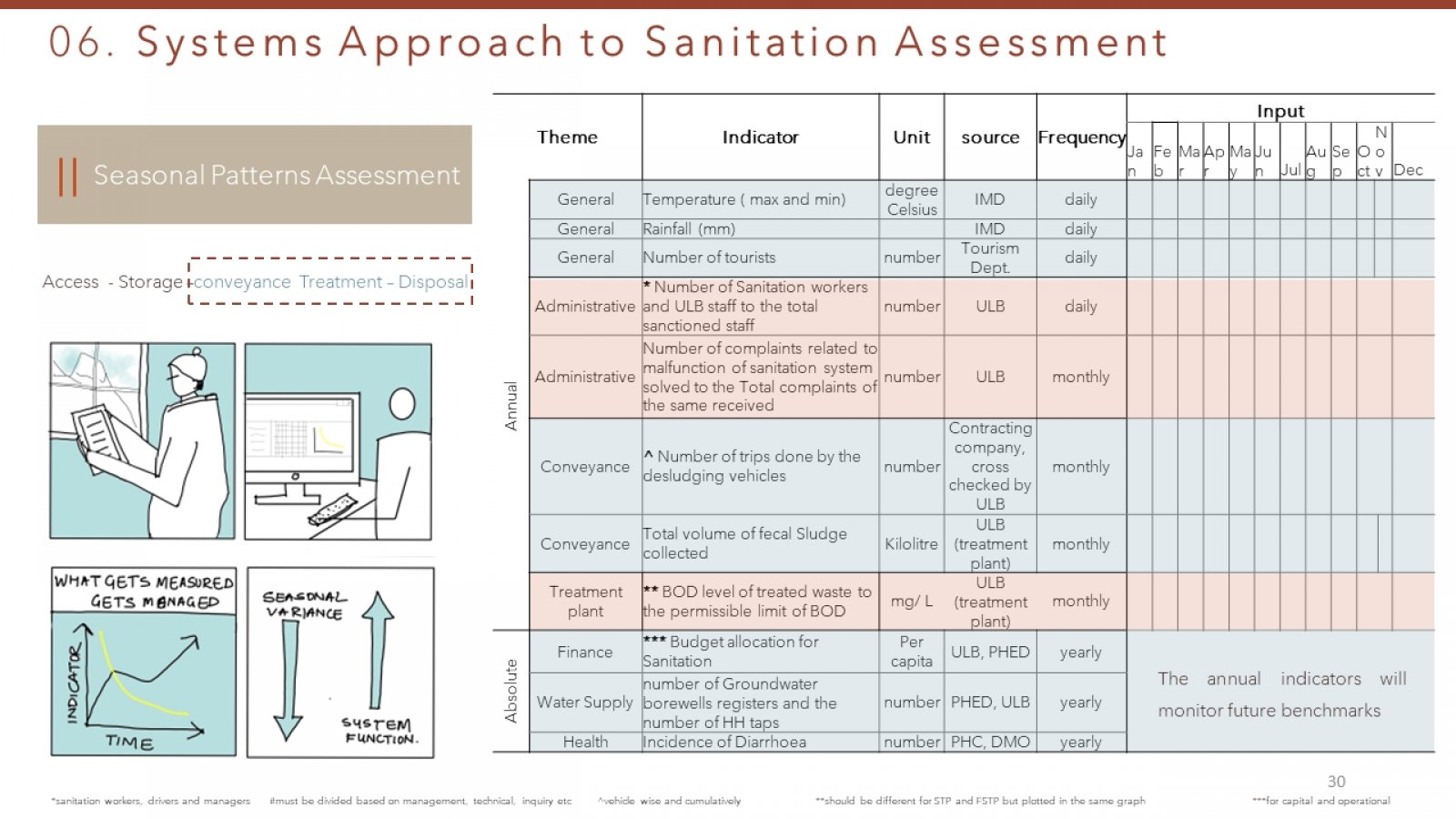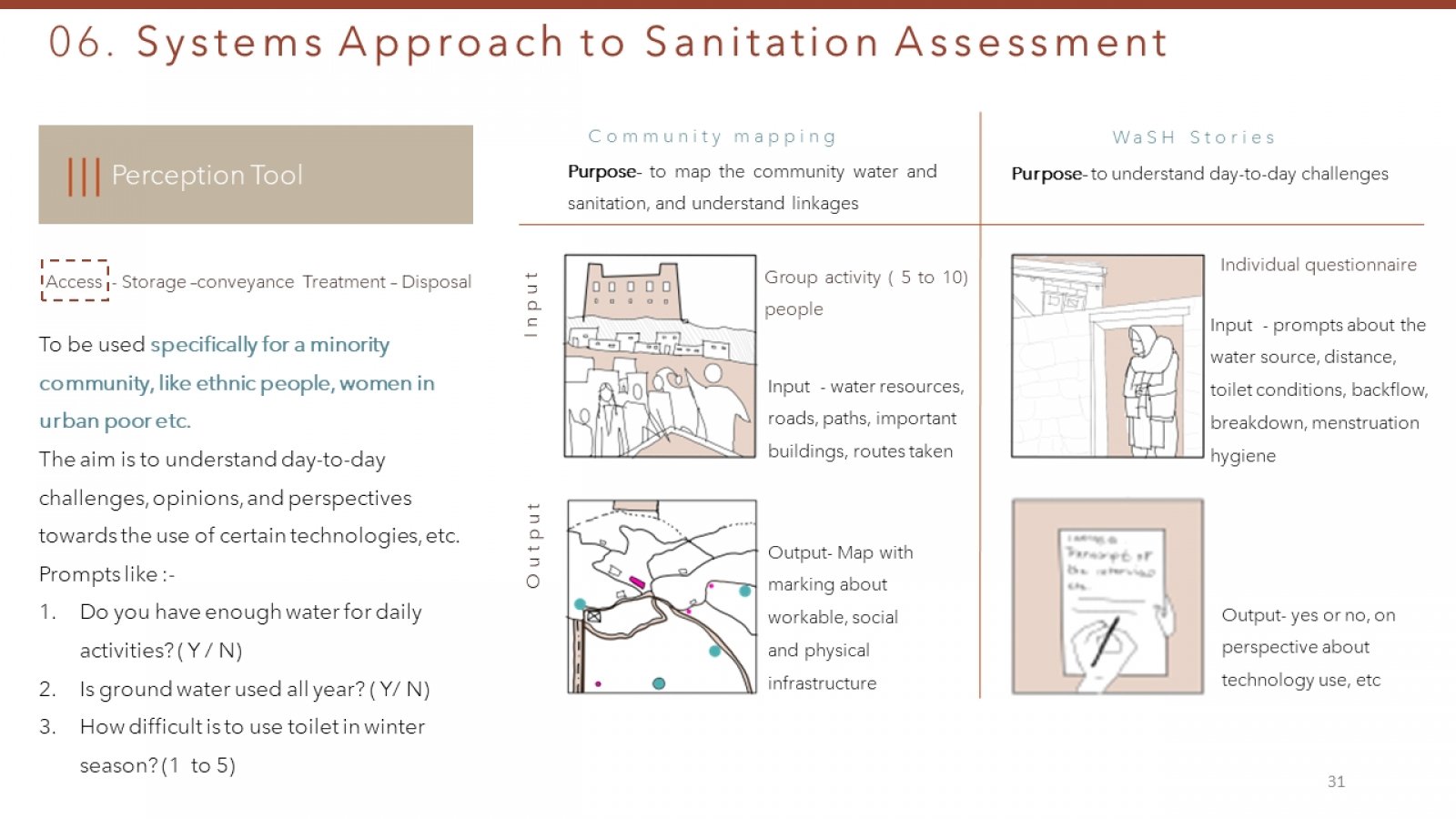Your browser is out-of-date!
For a richer surfing experience on our website, please update your browser. Update my browser now!
For a richer surfing experience on our website, please update your browser. Update my browser now!
Urbanisation in the small and medium hill towns of India is increasing. This growth is due to the rapid economic development in hill towns owing to migration and tourism. However, the capital-intensive sanitation infrastructure has not kept up with the growing demands of these towns. This results in a negative impact on human and environmental health. While there have been numerous research relating to the environmental, and social impacts of sanitation, the approaches and solutions to cater to context specific demands have been increasing over the years. Furthermore, most of the discourse on sanitation assessment in hilly regions, available in the open access, are ‘one-size-fits-all’ for the lowlands and have marginal benefits in the geologically sensitive hilly areas. Sanitation is a complex system and it’s cultural, social, economic, environmental, and technical interrelations drastically differ both spatially and temporally. To address this, the research aims to develop a city-wide sanitation assessment framework using the systems approach for the context of hilly areas. A literature review is conducted to review the existing sanitation challenges and existing sanitation assessment frameworks. Based on this understanding, a working assessment framework is designed and was tested empirically on Leh. Leh, a trans-Himalayan town with high population growth in the last decade has been considered to conduct empirical tests of the designed framework. For the analysis, qualitative methods like, site observations, unstructured interviews, and anecdotal analysis are used to document the drivers and barriers of the existing sanitation practices in Leh. A sanitation assessment framework is used to test the service delivery and enabling environment of the town, using quantitative tools like surveys and focused group discussions. The empirical findings review the gaps in the existing sanitation assessment framework and conclude by designing a sanitation assessment framework for the hilly towns.
